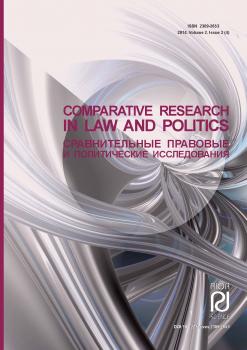The field of higher education has seen great increases in the mobility of international students over the last decades. Due to this trend, not only has global educational programming become increasingly important, but also, the development of appropriate visa regulations and schemes to support international students has come into debate. The F-1 visa in the United States and the Aufenthaltstitel for students in Germany are two cases, which are similar in many ways but different in others. Due to Germany’s status as a member state of the European Union, directives created at Union level, also have a significant impact on Germany's legislation. To be able to understand the procedure and benefits and/or disadvantages attained by the students themselves in each scheme, it is important to analysis the many aspects of the visa schemes. It's not better or worse, it’s just different’ is a phrase which, in the case of visa regulations, holds true. Important for both schemes however, is their ability to further the ideals of globalization through allowing student academic mobility.
student visas, student mobility, student migration,visa policy, immigration legislation, non-immigrantvisa.
Introduction
Throughout the world today there has been an increase in the mobility of students due to the worldwide trend of increased globalization practices. Through the massive technological advances, institutions of higher education worldwide are better able to attract students from other nations to attend their university. In response to this increased call for the internationalization of higher education and the mobility of students, as well as the increasing need for the migration of the highly skilled, nation-states strive to develop appropriate and profitable visa legislations and schemes to support students who wish to study within their borders. The approaches seen in the different nations of the world vary greatly, with some encouraging not only study, but also further migration possibilities, and others put more restrictions on students to remain only for the allotted period of study with the intention that these students will return to their home country postcompletion of their program.
1. European Commission, “Directive on the conditions of admission of third-country nationals for the purposes of studies, pupil exchange, unremunerated training or voluntary service,” (Brussels, 2004) accessed Dec. 29, 2013: http://eur- lex.europa. eu/LexUriServ/LexUriServ.do?uri=OJ:L:2004:375:0012:0018:En:PDF
2. “Proposal for a Directive of the European Parliament and of the Council on the conditions of entry and residence of third-country nationals for the purposes of research, studies, pupil exchange, renumerated and unremunerated training, voluntary service and au pairing” (Brussels, 2013), accessed Dec. 29, 2013: http://eur-lex.europa.eu/LexUriServ/LexUriServ.do?uri=OJ:L:2004:375:0012:001: En:PDF
3. Federal Republic of Germany, “Act on the Residence, Economic Activity and Integration of Foreigners in the Federal Territory,” trans. Language Service of the Federal Ministry of the Interior, (Saarbr cken 2014) accessed Jan. 5, 2014: http://www.gesetze-im-internet.de/englisch_aufenthg/residence_act.pdf
4. Immigration and Customs Enforcement,“SEVIS I-901 FAQ: Who pays - or does not pay - the SEVIS I-901 fee and when is it paid?”, accessed Feb. 10, 2104: http://www.ice.gov/sevis/i901/faq3.htm#_Toc81222012
5. King, Russel and Allan Findley, “Student Migration” In An Introduction to International Migration Studies, edited by Marco Martinello and Jan Rath, 259 - 280, Amsterdam: Amsterdam University Press, 2012.
6. Radu, Dragos and Thomas Straubhaar, “Beyond ‘Push and Pull’: The Economic Approach to Modelling Migration In An Introduction to International Migration Studies, ed. Marco Martinello and Jan Rath, 25 - 55, Amsterdam, Amsterdam University Press, 2012.
7. Robertson, Shanthi, Transnational Student-Migrants and the State: The Education-Migration Nexus. Basingstoke, Palgrave Macmillan, 2013.
8. Söderström, Ola and Shalini Randeria, Didier Ruedin, Gianni D’Amato, Francesco Panese eds. Critical Mobilities. Lausanne: EPFL Press, 2013.
9. United States Bureau of Consular Affairs “Fees for Visa Services,” accessed Jan. 9, 2014: http://travel.state.gov/content/visas/english/fees/fees-visa-services.html
10. “Student Visas,” accessed Jan. 9, 2014: http://travel.state.gov/content/visas/english/study-exchange/student.html#overview
11. United States Government, Immigration and Nationality Act (INA) Act 101 “Definitions,” accessed Jan. 20th, 2014: http://www.uscis.gov/iframe/ilink/docView/SLB/HTML/SLB/0-0-0-1/0-0-0-11261/0-0-0-17197/0-0-0-18003.html
12. Title 8 Code of Federal Regulations Part 214, Section 214.2(f) “Students in colleges, universities, seminaries, conservatories, academic high schools, elementary schools, other academic institutions, and in language training programs, section,” accessed Jan. 20th, 2014: http://www.uscis.gov/iframe/ilink/docView/SLB/HTML/SLB/0-0-0-1/0-0-0-11261/0-0-0-17197/0-0-0-17636.html
13. Title 8 Code of Federal Regulations Part 214, Section 214.2(h) “Temporary Workers,” accessed Jan. 20th, 2014: http://www.uscis.gov/iframe/ilink/docView/SLB/HTML/SLB/0-0-0-1/0-0-0-11261/0-0-0-17197/0-0-0-17636.html
14. United States Department of Homeland Security, “User Manual for School Users of the Student and Exchange Visitor Information System Version 6.10: Volume II Form I-20”, (Washington DC, 2012) accessed Feb. 21, 2014: http://www.ice.gov/doclib/sevis/pdf/School_UM_Vol2.pdf





